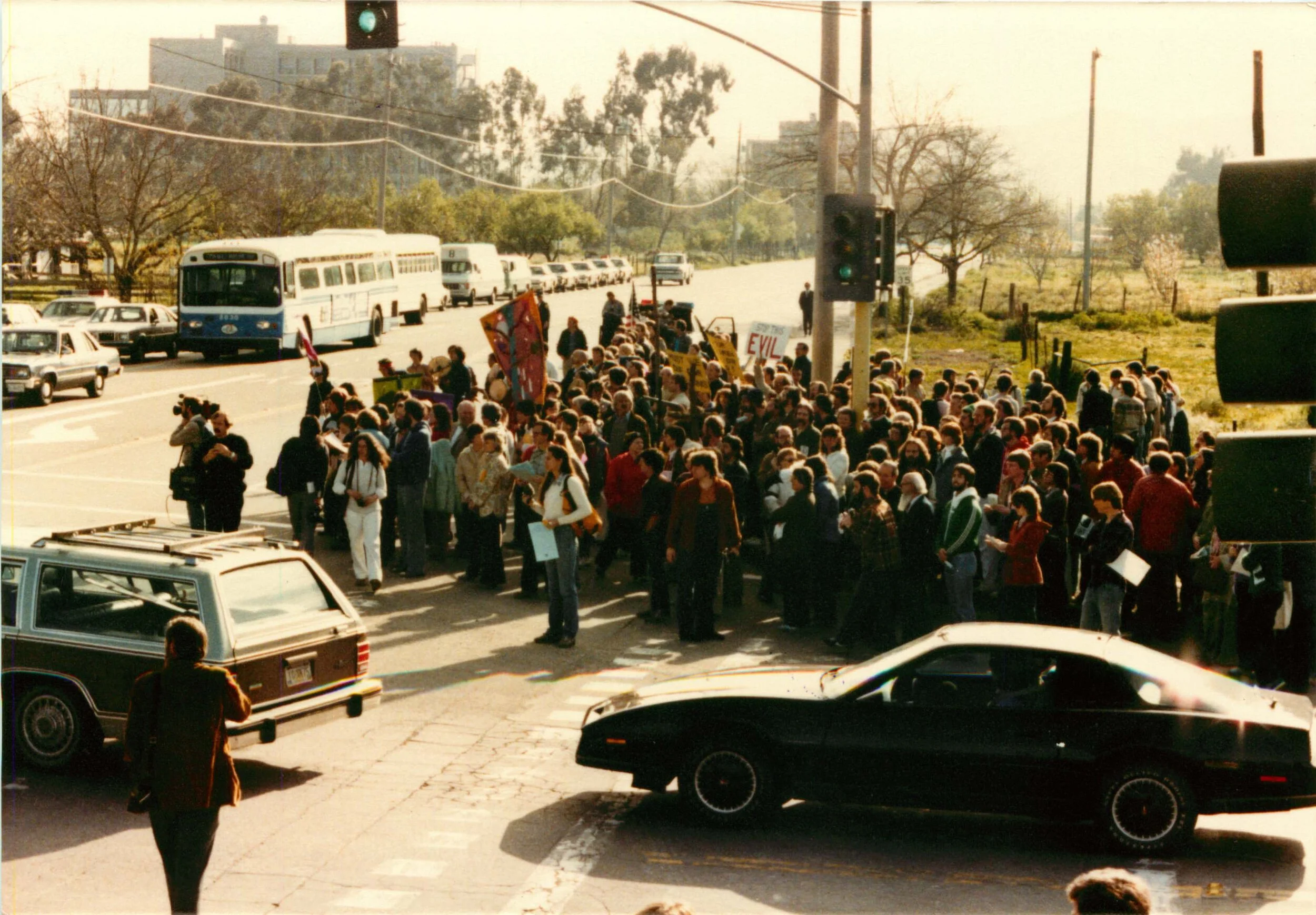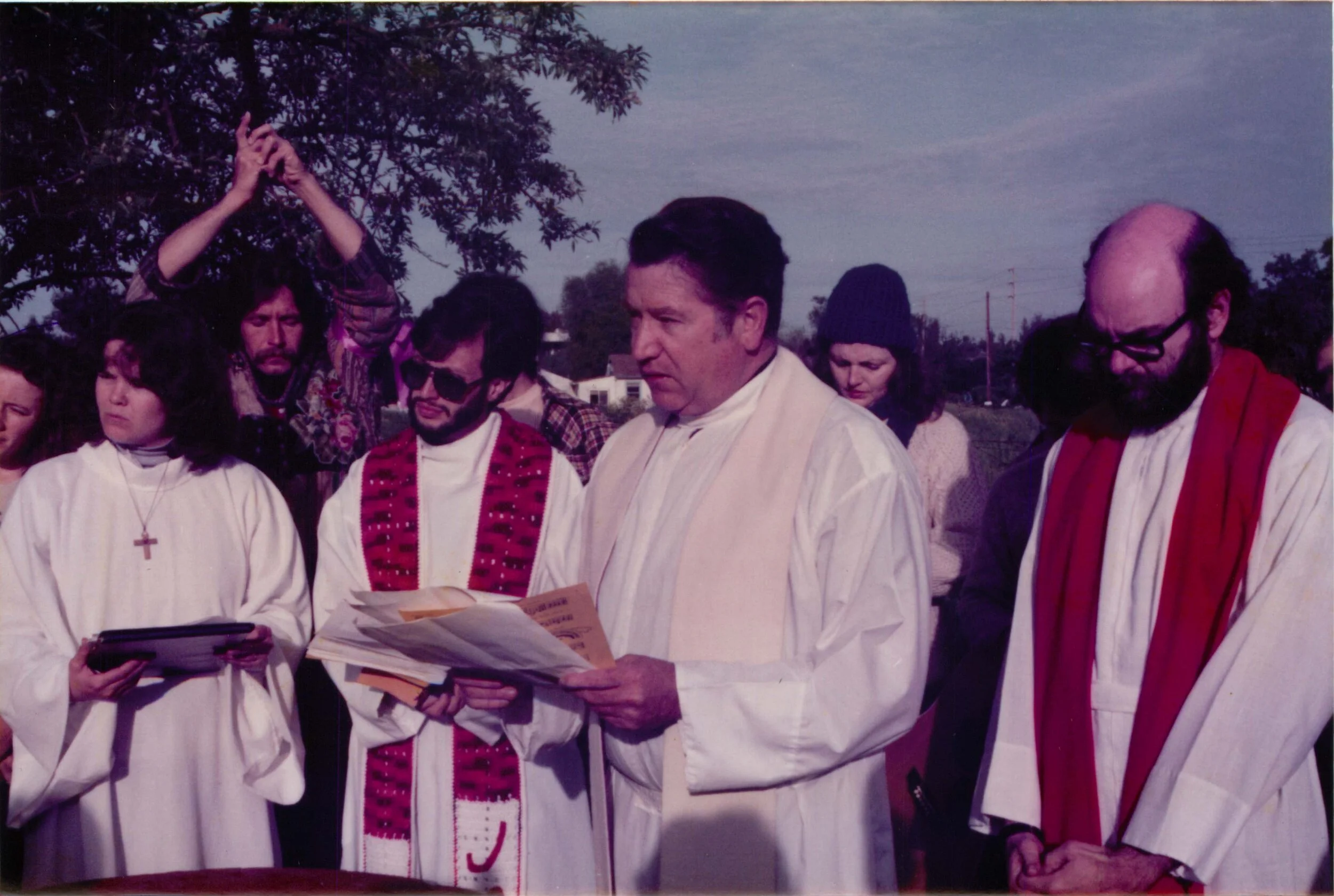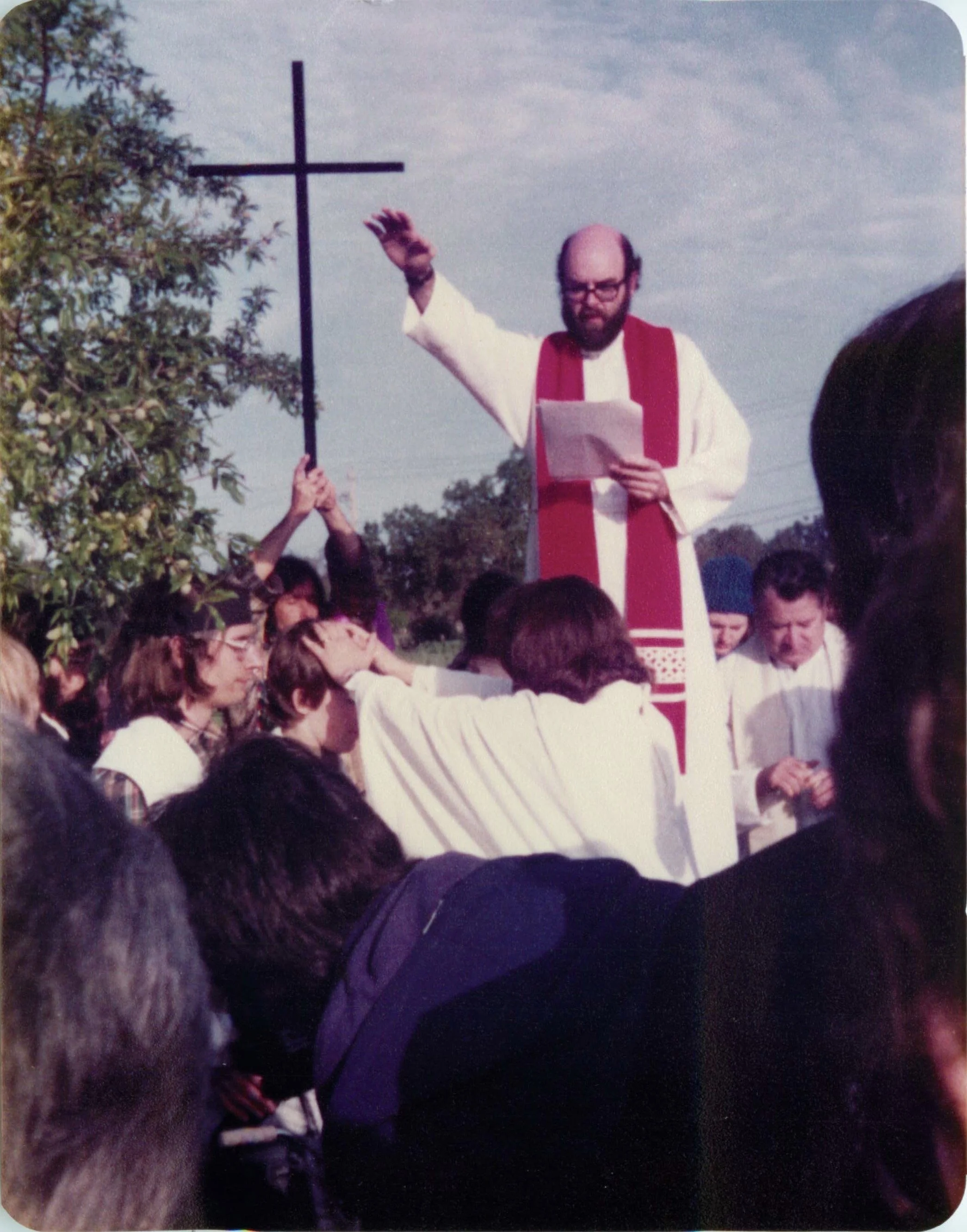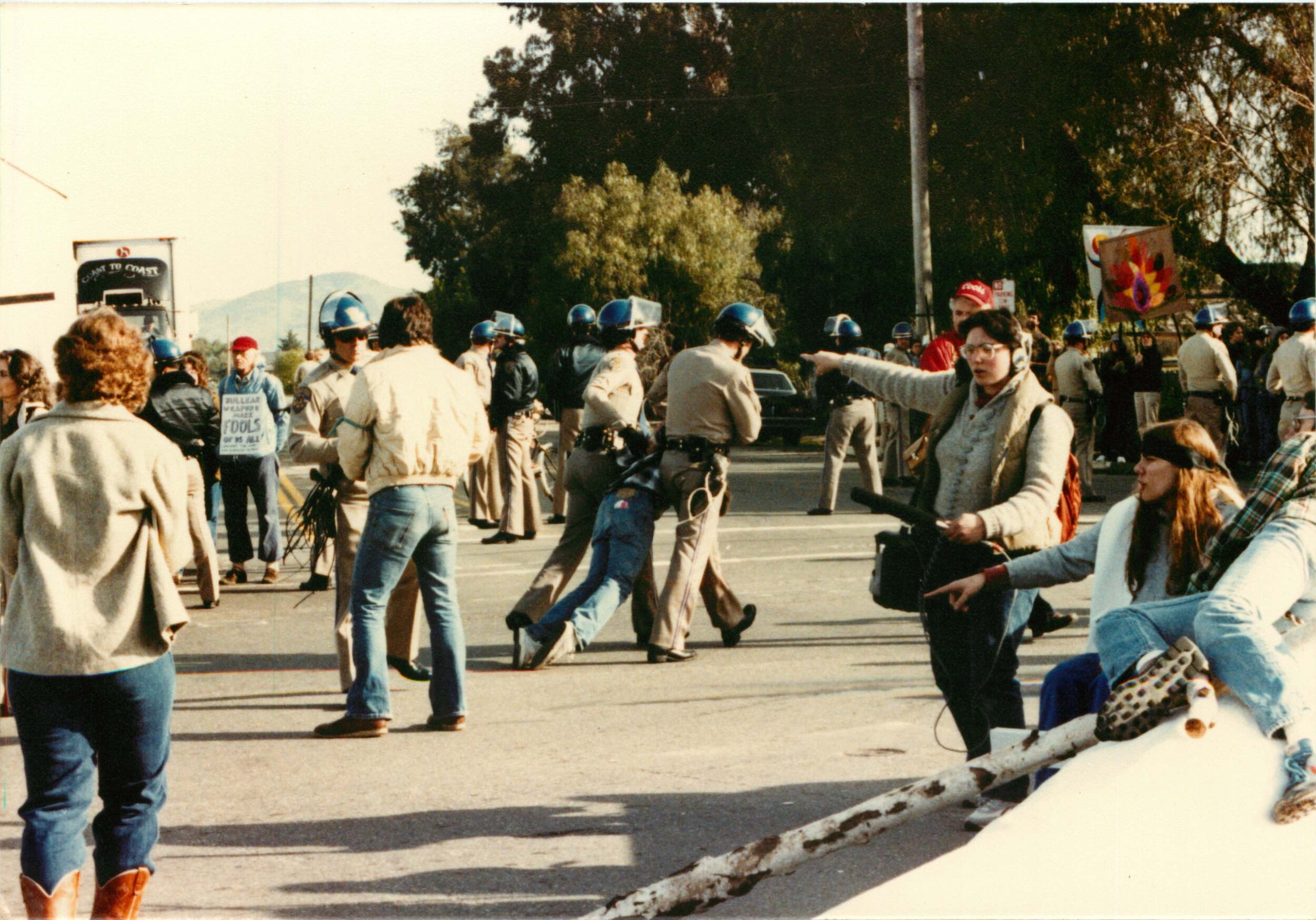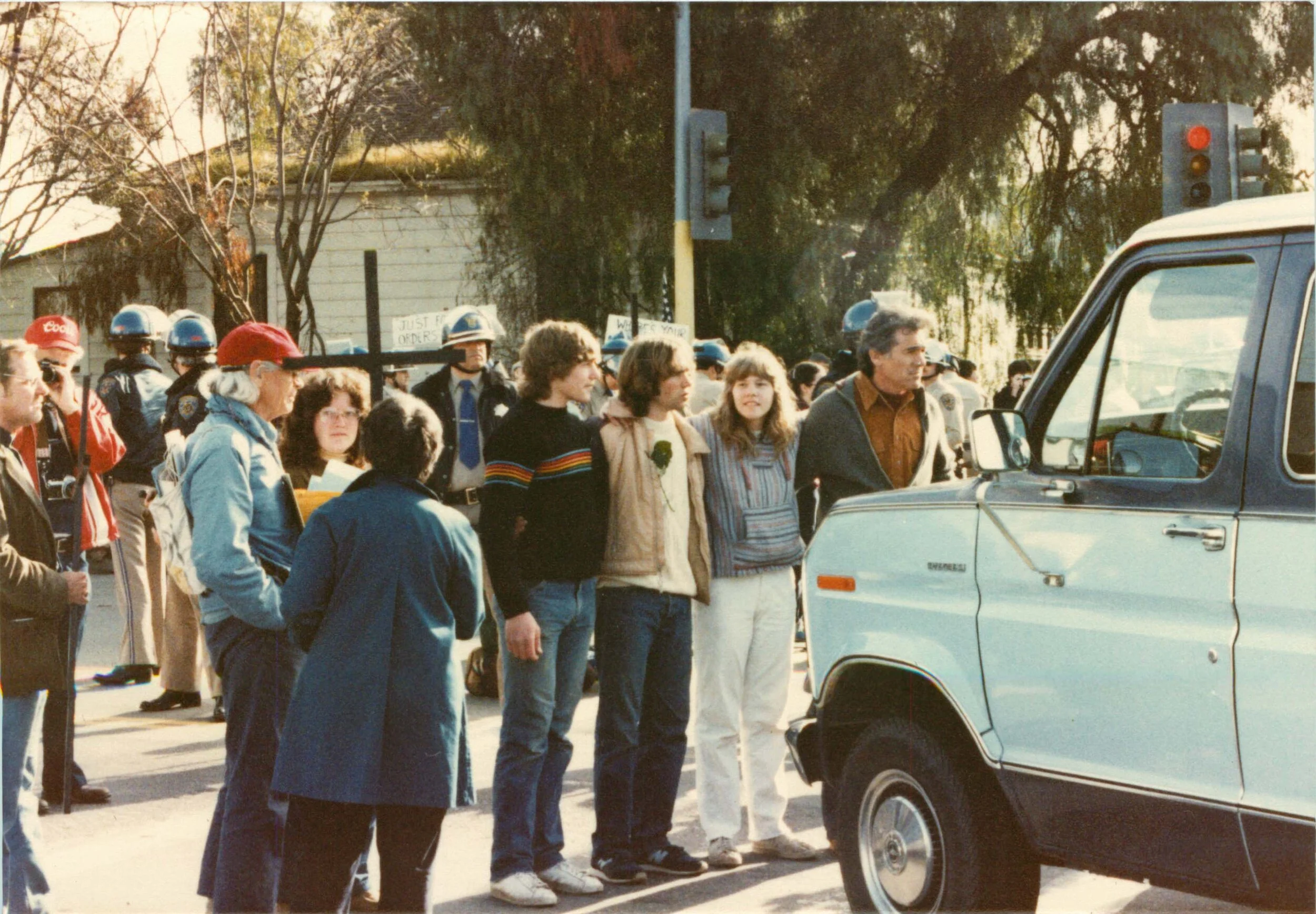For the Healing of the Nations: Nuclear Resistance and COVID-19
In 1983 I was part of Spirit Affinity Group, a group of students which organized the first Good Friday service and nonviolent action at Lawrence Livermore National Laboratory in California, a top-secret facility where fifty-percent of the US nuclear arsenal has been designed. This year I was asked to preach at the 37th annual Good Friday service at Livermore. In light of the COVID-19 pandemic, the service was held online. Below is the text of my sermon.
When the theme for this year’s service was first chosen, there was no sense at the time of how appropriate it would turn out to be. The theme this year is the “Healing of the Nations,” from the Book of Revelation:
“Then the angel showed me the river of the water of life, bright as crystal, flowing from the throne of God and of the Lamb through the middle of the street of the city. On either side of the river is the tree of life with its twelve kinds of fruit, producing its fruit each month; and the leaves of the tree are for the healing of the nations.” Revelation 22: 1-2
How apt this theme now is, as we watch COVID-19 tear through the fabric of life on every continent and prompting the need for healing in virtually every nation on the planet. Millions are at risk. And millions are staying put, even those of us who would normally be physically present at Livermore Laboratory.
For the first time in 37 years, we do not gather at the lab. Like people of faith around the world, we are marking Good Friday in self-confinement. We are perhaps glimpsing in a new way the shock of that first Good Friday and that even greater shock of Easter Sunday. We are not together in a religious building. We’re not even at the lab, bringing our religious, transformative ritual to a place that needs deep healing, transformation, conversion. Instead we are experiencing in our own way the separation and anxiety of that first Good Friday. Perhaps, in our own ways and contexts, we are tasting across those 2000 years the dread and unknowing that the first disciples experienced. Things had been going along so normally—and then, suddenly, dramatically—everything changed. The world they had known disappeared.
And, perhaps, that’s true for us, too. Like the followers of Jesus, we don’t know how this crisis, in 2020, is going to turn out. We’re confronted with the unknown. We are challenged by the unknown. For now, and maybe forever, we’re facing the unknown. Or, maybe we can think of it the way the late Zen Priest Bernie Glassman put it: we are “bearing witness to the unknown.” This would not have been something we would choose, necessarily. But here we are dumbstruck, present in this strange and disorienting moment. And in this moment, we bring that disorientation to our annual pilgrimage to Lawrence Livermore National Laboratory, whose work designing and perfecting nuclear weapons has unleashed a monumental disorientation in our world and in our lives. We are bearing witness to the lab, and all it means. But not doing it in our places of worship. And not doing it at the lab.
Wherever we are, we are bearing witness to the reality of nuclear weapons. After all, our nuclear culture is not in any one place, but in an infinite number of places. When every point on the globe lies vulnerably in the nuclear cross-hairs, the nuclear center is everywhere and nowhere. So wherever we are, watching or hearing this, is a place of bearing witness, prayer, and nonviolent resistance.
Wherever we are, and however disoriented, we are still doing the work of “healing the nations.” We make an annual journey to this place longing for healing. For ourselves. For our communities. For all those who have been harmed directly and structurally. For all those denied resources, dignity and the fullness of life because a decision was made nearly 80 years ago to build a sprawling system of threat and destruction, a decision that has been ratified over and over again with each passing decade.
The Anti-Nuclear Weapons Movement
Over those decades, there has been alternative decision. Many of you have been faithfully voting with your lives for another way, a world free from nuclear weapons. Even as we face the unknown in this strange moment, we are maintaining a steadfast tradition, visible and invisible, calling for a world that does not rely on weapons of mass destruction, but instead uses its bounty to meet the needs of everyone in this wounded and sacred world. From the very first days of the nuclear age, there have been voices ringing out for the great conversion—the disarmament of the United States and all nuclear powers, and the disarmament of our hearts and our lives that have made the nuclear threat possible.
Within days of the US bombing of Hiroshima and Nagasaki, Dorothy Day wrote forcefully against this barbaric act, and she would go on to organize a movement of nonviolent resistance in the 1950s, disobeying orders to comply with civil defense drills where the entire population was ordered to meekly go into fallout shelters.
And there were so many others—the brave souls who sailed a boat called “The Golden Rule” into a nuclear test site in the South Pacific, risking death to stop a nuclear detonation. The mothers who organized against nuclear testing and the radioactivity above-ground tests were spreading around the world. Endless anti-nuclear walks across the United States, Europe and the Soviet Union. Innumerable mobilizations, marches and demonstrations every decade, including a million people who marched into Central Park in 1982 calling for the US and the USSR to freeze the arms race in its tracks, and 1400 people that same month who were arrested at Livermore engaging in nonviolent civil disobedience, and the women of Greenham Common at a US base in England that organize a continuous , 19-year vigil at the base beginning in 1981, and a concerted, global campaign to achieve the Comprehensive Test Ban Treaty in the 1990s. And many, many other efforts. The anti-nuclear weapons movement has been called the longest single, worldwide movement in history, and we are continuing that tradition today, from wherever we are hunkered down.
We are grateful for all the groups who have persevered in organizing this movement here at Livermore on Good Friday all these years, especially the Ecumenical Peace Institute, Tri-Valley CARES, Western States Legal Foundation, the Livermore Conversion Project, and many stalwart, relentlessly persistent organizations. Each of you has, in season and out, faced the disorientation of the nuclear threat with faithful resistance and commitment. Each of your efforts has played an important part in the historical movement for “the healing of the nations.”
The First Good Friday Service at Livermore
This particular tradition at Livermore Laboratory began on Good Friday in 1983, when a handful of us also decided to challenge this disorientation and bear witness to the unknown. We were students at the Graduate Theological Union who formed what we called Spirit Affinity Group, including Terry Messman, Darla Rucker, Patricia Runo, Bruce Turner, Cathy Vahsen, Ron Stief, Sandee Yarlott, Rick Cotton, Jim Bridges, and myself. We had been involved in protests at the lab, and felt called to confront the great spiritual crisis of our time from our particular religious contexts. We decided to organize "The Way of the Nuclear Cross" at Livermore National Laboratory on Good Friday. This ritual would evoke "The Stations of the Cross," a popular devotion of the Roman Catholic Church which originated in the Middle Ages. Three members of the group -- Terry Messman, Darla Rucker, and Patricia Runo -- had made the decision to enter the Roman Catholic Church, and they proposed that the ritual be held at the laboratory as a way of signifying their theological conviction that reception into the church meant reception into Jesus' "way of the cross." We decided that the service would culminate in nonviolent civil disobedience.
The group slowly developed a scenario for its nonviolent direct action at Livermore. We gathered that Spring for shared prayer and shared silence. We believed that it was out of this centering and darkness that the most appropriate image, gesture, word, or drama with which to take action would emerge. We slowly realized that we wanted to clarify the ways in which nuclear weapons function as the modern crucifixion, and we wanted, as Patricia Runo wrote at the time, to have the laboratory and the US government "take back the nuclear cross." Gradually, we conceived of carrying a 25-foot mock-up of Livermore's most recent project, the MX missile, to the gates of the laboratory. Additionally, we decided to chain ourselves to the missile, symbolizing the domination that the nuclear weapons regime exerts on humanity.
We produced a leaflet and the booklet of reflections entitled Carrying the Nuclear Cross. We circulated word about the event throughout the Bay Area. We conducted three nonviolence preparation trainings, daylong workshops which grounded people in the "nonviolence guidelines" of the day and gave people opportunities to practice ahead of time what to expect in a series of "role plays." We wrote press releases, did mailings to local newspapers and electronic media, and alerted reporters that we knew. Ron Stief and I traveled to an industrial park in the South Bay to buy a large cardboard tube which a friend of ours, Michael McDonald, used to create the main body of the missile. In the end, it was eerily evocative of a sleek, long rocket with a fluorescent orange "warhead" in the nose and marked on both sides by Air Force insignia and a single black cross and two written explanations: "THE NUCLEAR CROSS" and "Mass eXtermination," which highlighted its status as an "MX" missile.
As Fr. Bill O'Donnell (pastor of St. Joseph the Worker Catholic Church), Mary Doyle (a pastoral associate at Holy Spirit Catholic Church) and Fathers Richard Chilson and Michael Park (also at Holy Spirit) presided at the ceremony, Terry Messman declared:
“Almost 2,000 years ago, a Roman government crucified the Prince of Peace, who became the first of many...Christians throughout history to be persecuted as peace criminals. The Cross was the instrument of torture used by the Roman imperial government to execute Jesus. The MX warhead designed at Livermore Laboratory is the Nuclear Cross while can be fired at any moment by an imperial government to initiate a First-Strike Crucifixion of millions of defenseless children. Some of us today will be carrying this Nuclear Cross to enact the Nuclear Passion of Christ as a warning to all people that we must resist the radioactive crucifixion of the world.”
After the service and confirmation, we hoisted The Nuclear Cross from the ground and began our procession to the lab.
We had planned to take it to the lab's South-West Gate, but a long flank of California Highway Patrol officers had been flung across the width of East Avenue. We would not be allowed to reach the gate. So we improvised, laying it in the center of the intersection of Vasco and East. As we chained ourselves to the missile, beginning to enact a "die-in,” we asked the others risking arrest to kneel, sit or stand in lines at each of the four perimeters of the intersection. Eventually 73 of us were arrested. The eight of us chained to the missile were cut free by the sheriffs and arrested, and then the missile was dragged away by authorities. When we went to trial months later, we wanted to have it brought in to the courtroom as Exhibit A, but we were told that it was laying on the bottom of the Livermore dump. We took this to be a fitting symbol of disarmament. In fact, as we had hoped, the lab had, indeed, “taken back the nuclear cross.”
Nuclear Arms and COVID-19
In 2020, we mark almost four decades of continuing this witness. The Pentagon’s budget request for fiscal year 2021 asks for over 100 billion dollars more than last year for nuclear weapons and advanced conventional weapons, this at a time when COVID-19 has laid bare the fact that the survival of the world clearly depends, not on weapons, but on rebuilding a world that works for everyone. Violence, including nuclear weapons, won’t flatten the curve of infection or heal those who have tested positive. Violence, including nuclear weapons, will not prevent transmission, treat the sick, console the dying, and comfort survivors. In a world where ending a pandemic depends on the well-being of all of us—and not only certain groups or certain nations--our very survival depends, once and for all, in fashioning a global safety-net for all, with universal health care for all, economic and social equity for all, dignity and human rights for all.
We are at a crossroads. When the pandemic passes, the existing systems will try to drive us back to the normalcy of violence and injustice – the normalcy of 2019, and all the years before it. But it need not be like that. As Fr. Bryan Massingale, a professor at Fordham University, has said, "Our goal cannot be a return to an unjust ‘normal.’”
We can join with our sisters and brothers worldwide who have faced the brunt of this crisis to set the world in a new direction. A world building on the power and spirit of nonviolent engagement that has been unleashed in response to this disaster: compassion, courage, resilience, sacrifice and concerted action for the common good.
Our Choice
The greatest social movement in human history is coming. We have heard some important signals in this direction – including the UN Secretary-General’s call for a global ceasefire in light of COVID-19, which a dozen countries at war have responded to favorably; and Pope Francis’ historic declaration that the possession, as well as the use, of nuclear weapons is inadmissible. But there are many other seedlings of nonviolence, and we can all nurture them in this emerging global movement, a movement of movements.
In a curious way, COVID-19 is a strange messenger. It is calling us resolutely to join this planetary movement.
In this time of anxiety, let us renew our relationship with our loved ones, even if we are in close quarters.
In this time of dislocation, let us nurture the bonds of connection and solidarity.
In this time of instability, let us imagine what nonviolent practice we can take up and deepen.
In this time of disruption, let us find ways to commit our lives to the healing and well-being of all.
Let us join this all-embracing movement for the great turning, as Joanna Macy puts it. Let us commit ourselves to the dramatic, systemic transformation needed now more than ever.
The vision, principles and strategies of nonviolent movement-building will strengthen our capacity as agents of nonviolent change -- for a renewed and revitalized world, and for “The healing of the nations.”
All photos by Jim Butigan and Lisa Jamieson

